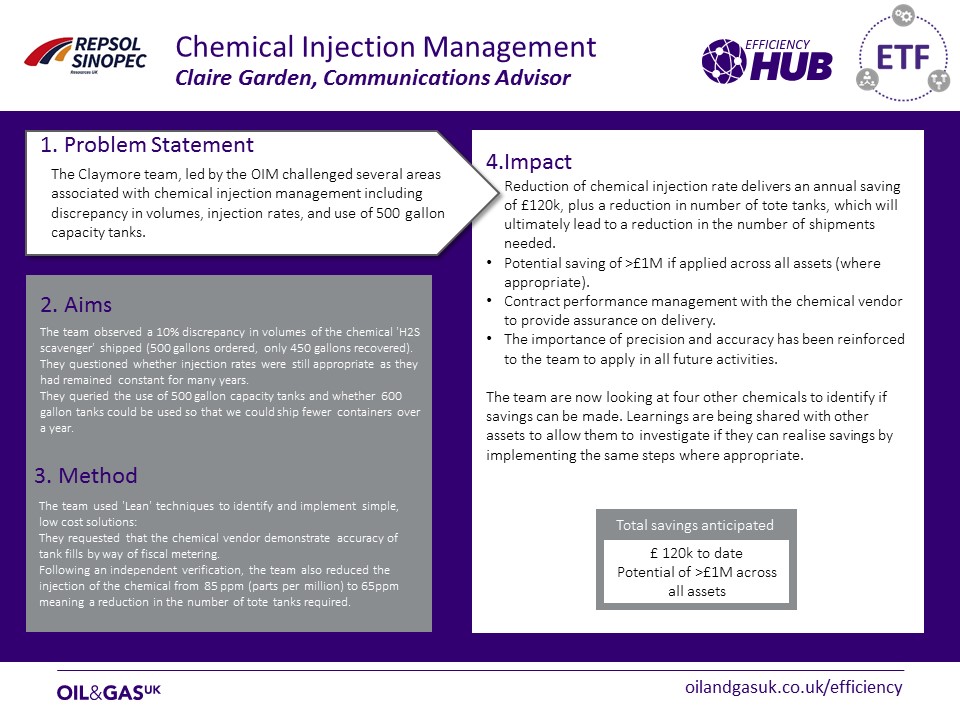Repsol Sinopec – Chemical Injection Management
Problem Statement
The Claymore team, led by the OIM challenged several areas associated with chemical injection management including discrepancy in volumes, injection rates, and use of 500 gallon capacity tanks.
Aims
The team observed a 10% discrepancy in volumes of the chemical ‘H2S scavenger’ shipped (500 gallons ordered, only 450 gallons recovered).
They questioned whether injection rates were still appropriate as they had remained constant for many years.
They queried the use of 500 gallon capacity tanks and whether 600 gallon tanks could be used so that we could ship fewer containers over a year.
Method
The team used ‘Lean’ techniques to identify and implement simple, low cost solutions:
They requested that the chemical vendor demonstrate accuracy of tank fills by way of fiscal metering.
Following an independent verification, the team also reduced the injection of the chemical from 85 ppm (parts per million) to 65ppm meaning a reduction in the number of tote tanks required.
Impact
- Reduction of chemical injection rate delivers an annual saving of £120k, plus a reduction in number of tote tanks, which will ultimately lead to a reduction in the number of shipments needed.
- Potential saving of >£1M if applied across all assets (where appropriate).
- Contract performance management with the chemical vendor to provide assurance on delivery.
- The importance of precision and accuracy has been reinforced to the team to apply in all future activities.
The team are now looking at four other chemicals to identify if savings can be made. Learnings are being shared with other assets to allow them to investigate if they can realise savings by implementing the same steps where appropriate.
Total Savings Anticipated
£ 120k to date
Potential of >£1M across all assets
Click on the image above to download the case study.




